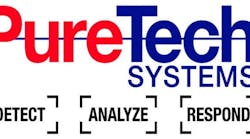Recurring monthly revenue (RMR) has always been attainable for security dealers and integrators, but perhaps hidden from view. Now that obtaining it is a necessity for company profitability, it is in plain sight.
Back when hardware margins were high for smaller projects and large integrations alike, dealers and solution providers were not so concerned with predictable cash flow. Installing product likely guaranteed double-digit profit margins in many instances, and all was good in the land of security technology specifications.
The next part of the story is familiar to most. Across the board, profit margins on hardware shrunk dramatically, causing dealers and integrators to rethink their strategies. They were forced to take a leap of faith and look beyond traditional installations and central station contracts to make a profit. They could also see that monitoring was no longer bringing in the returns they required to stay healthy, what with the ongoing commoditization of that sector as well.
Today, it is all about trying to create ongoing streams of RMR. Dealers and integrators have had to step out of their comfort zones and experiment with new technologies to get the money flowing in at a healthy, sustainable pace. For some, this has been a tough road to travel. For others, such as those in the audio/visual business or IT services who witnessed this same scenario happen years ago, the transition has not been quite as difficult. But no matter what product sector you participate in or vertical market, RMR is possible.
A New RMR Resource
The pursuit of RMR takes a different mindset, a companywide cultural shift. With the acute focus on RMR comes a need for education and peer groups to provide resources on how to approach the business — from sales to creating proactive service plans. Getrmr.com is a new, uniquely positioned industry partner that fills this void. It brings dealers, manufacturers and industry experts together to provide centralized resources and a support mechanism for professionals adding recurring revenue categories to their businesses.
With the shift to services and RMR, there is a learning curve, a trial and error period and a need for frank discussion among peers, which is what Getrmr.com brings to the table. The website features sales and marketing collateral, templates, forums and technical content from managed service trade professionals and industry bloggers, as well as educational whitepapers. It is designed to help smooth this cultural shift and help technology solution providers focus on the ever-expanding world of predictable cash flow — aka, RMR.
Cultural & Philosophical Shift
The shift to managed services and RMR comes courtesy of cloud services and network connectivity. One of the ways to obtain the additional RMR that is taking the industry by storm is remote network management solutions. This type of service provides RMR by enabling the proactive management of a customer’s network and often saves a costly truck roll to the site — streamlining workflow and increasing efficiencies. Most network-related problems can be solved remotely online and service providers have a centralized, web-based dashboard with real-time visibility into client networks that’s facilitated onsite through low-voltage Internet appliances. Through this value-added service offering, technology solution providers can proactively and efficiently manage their customer’s networks, potentially eliminating up to 90 percent of service calls while increasing RMR and boosting profits.
The move to an RMR model changes a company and the way it does business as it adopts new digital technologies that deliver network intelligence and customer data. There’s a need to focus on sales strategies, deployment tactics, pricing and contracts. Technology solution providers can lead with service, a critical value-add differentiator in the crowded contracting space. Customers will pay more for good service and are also more likely to stay with trusted providers for years to come when they receive it.
Now that security dealers and integrators have entered this realm, they need to focus on their contracts — often referred to as customer or client care plans. They need to charge appropriately for services and set customer expectations through detailed agreements.
Technology providers need to recognize, and charge for, all the tasks they can perform for the customer, like system reboots. System reboots save the company money by not having to dispatch a technician, but the service still has a cost attached to it: labor. Inform the customer what it would have cost for an onsite visit without the care plan — give them the actual figure so there is a relative value associated with the service. Putting a price tag on the service adds more value to the agreement itself in the customer’s eyes.
Getting on the Path to RMR
The Internet of things (loT), a buzzword still reverberating from the 2015 International Consumer Electronics Show, will only intensify the need for technology providers to create a company based on providing network-connected solutions. According to the 2014 State of the Internet of Things Study from Accenture Interactive, 69 percent of consumers plan to buy an in-home device in the next five years. The study also confirms that by the end of 2015, nearly 13 percent of consumers will have an loT device, such as an in-home security camera or automated thermostat. For more on this survey, visit http://bit.ly/Accenture-IoT.
By 2020, the Federal Trade Commission (FTC) says there will be 50 billion connected devices. The FTC defines IoT as “devices or sensors — other than computers, smartphones, or tablets — that connect, communicate or transmit information with or between each other through the Internet.”
All this means having a reliable and robust network that is connected at all times will be even more important to residential and commercial customers — leading to significant RMR opportunities. Here are five ways to get started down this path:
- Establish best practices and sales incentives/compensation for bringing in more RMR. This can be a one-time payment based on a percentage of the RMR contract or a flat dollar amount. Bring installers in on the plan and provide monetary incentives for referrals that result in additional RMR.
- Make client care plans part of every installation contract. Set customer expectations with succinct details outlining what’s covered, what’s not, and the specific charges they can expect to see if they don’t opt in. Remember, there will be different approaches to these agreements depending on the market, the company and its goals.
- Continue to add value and elevate the customer’s perception of value. For example, provide monthly reports outlining what systems were monitored, even if nothing required action. Offer firmware updates, extended hardware warranties or product discounts included in the plans.
- Take a hit at first. You may have to replace and install new customer equipment or a more robust network infrastructure to capitalize on remote monitoring and connected devices.
- Make use of free educational resources. Use websites such as GetRMR.com and stay up to date on new and emerging technologies. Change will be swift as the loT gains momentum and broader acceptance.
The bottom line is that the changes within the industry put security dealers and integrators in a perfect place to take advantage of the IoT and connected technologies. Use this as an opportunity to earn RMR by focusing on the variety of applications, such as interactive services that enable the monitoring and control of video, lighting, thermostats, water sensors and electronic locks.
Lead with service and stay fixated on a ‘sticky’ customer — one who wants and needs your services. Become a trusted technology advisor to your customer and they will be stuck to you like glue, and rightfully so, as you have taken care of their needs long before they even knew need what they were.
Have experience or are you looking for insight? Share your comments to keep the conversation going at SD&I’s exclusive Linkedin discussion group: http://bit.ly/SDIonLinkedin.
Michael Maniscalco is the co-founder and vice president of technology for ihiji (www.ihiji.com) and served as one of the principal architects of ihiji invision, the company’s cloud based real-time remote network management solution.


